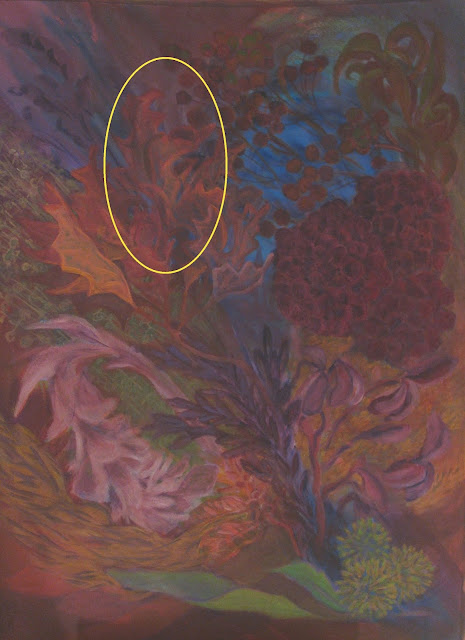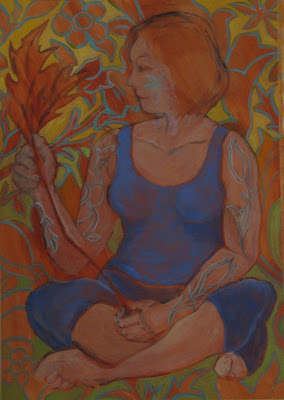In the past year or so, I've been able to pursue my artistic passion for the human face and figure. But it seems inevitable that occasionally, shoots will emerge from my deep-rooted response to nature and thereby to botanical art. One of my earliest blog posts was on the genetic source of this connection -- I come by it honestly!
While playing on the sidelines of my on-line course, I've been trying to keep up with "my own stuff," the gazillion ideas that have nothing to do with the artist-of-the-week program. One of those ideas, convoluted I grant you, was a painting of a botanical artist -- "botanical" in the sense that she'd be covered with tattoos that would intertwine with a leafy background. Early in the year, I played with this idea in a postcard-sized study that showed me I needed to go back to the drawing board.
As the months passed and I began to assemble a stack of studies from the life drawing studio I attend, I realized I could use one of these as my prototype pose.
Originally, I thought I'd show the Bot-Artist's sketchbook, but I dispensed with this when I saw how limiting it would be within the size of my paper.
Well, it's a good idea to spend time looking before drawing/painting -- so I shifted gears to show her examining a leaf. And I knew *just* where to find the big leaf I needed. Back to my photo archives for my 2002 painting, "Dreams of Wild Botanists (warm)":--
A flip of the orientation, and there was the very oak leaf I had in mind (hard to see; it's a you-had-to-be-there kind of thing):--
That put me on the right track. I was able to enlarge the figure on the page to work in the way I wanted to.
Now, what about the background? In one of those flashes of insight or wackiness, I had a hunch that one of my early heroes, William Morris, just might be able to supply the....er, wallpaper.
Found! I knew Morris was a kindred spirit. There's my oak leaf in his "Granville" wallpaper pattern! I mentally superimposed his oak leaf onto mine and from that, I worked outward, modelling my foliage and its relationships on his.
And here, in a clearing in the jungle, is the outcome: "Botanical Artist," copyright 2018.
In the spirit of acknowledging All Those Who Made This Masterwork Possible, I'll sign off with a plate from the works of my many-times-great-grandfather, John Linnaeus Edward Whitridge Shecut. As you will read, he was a bit of a nut case himself.

























